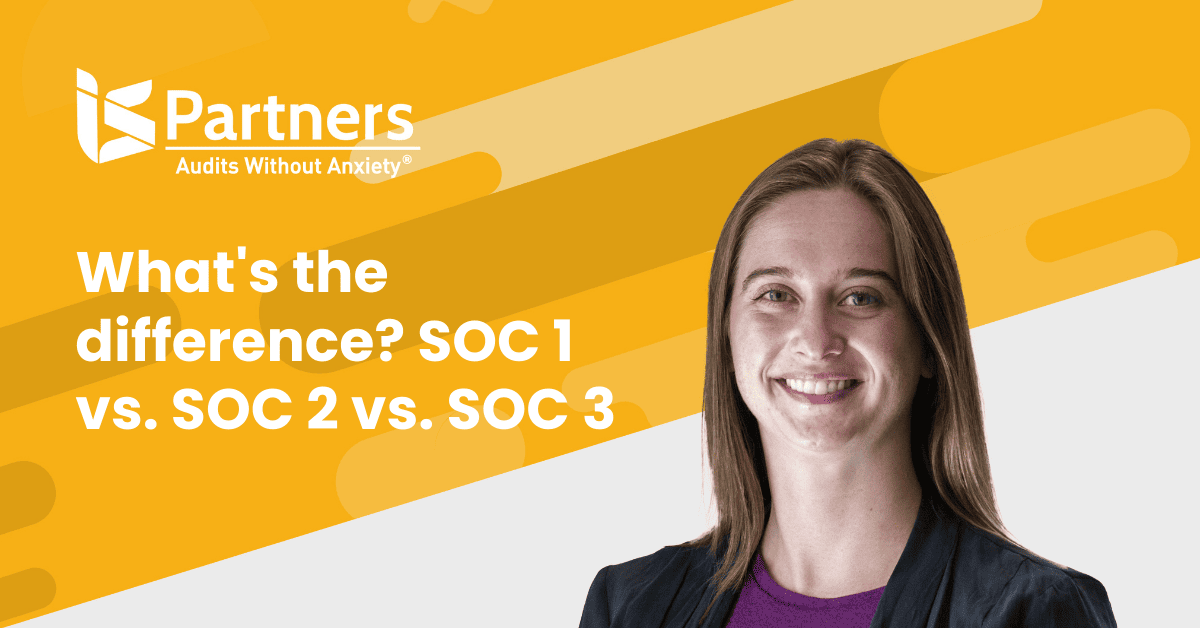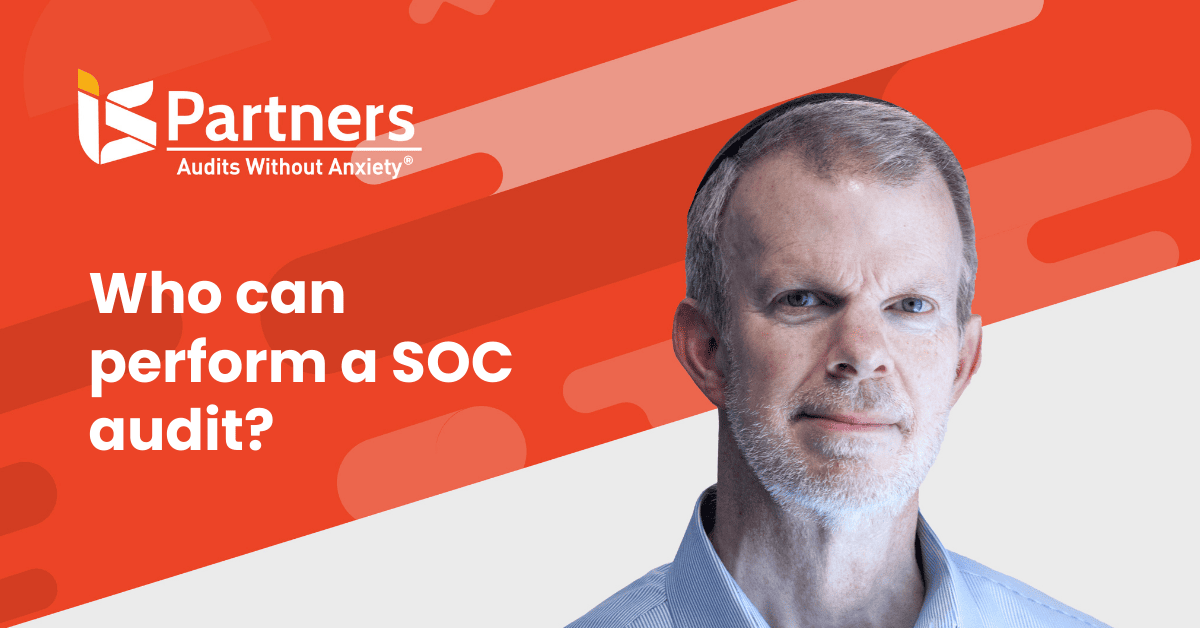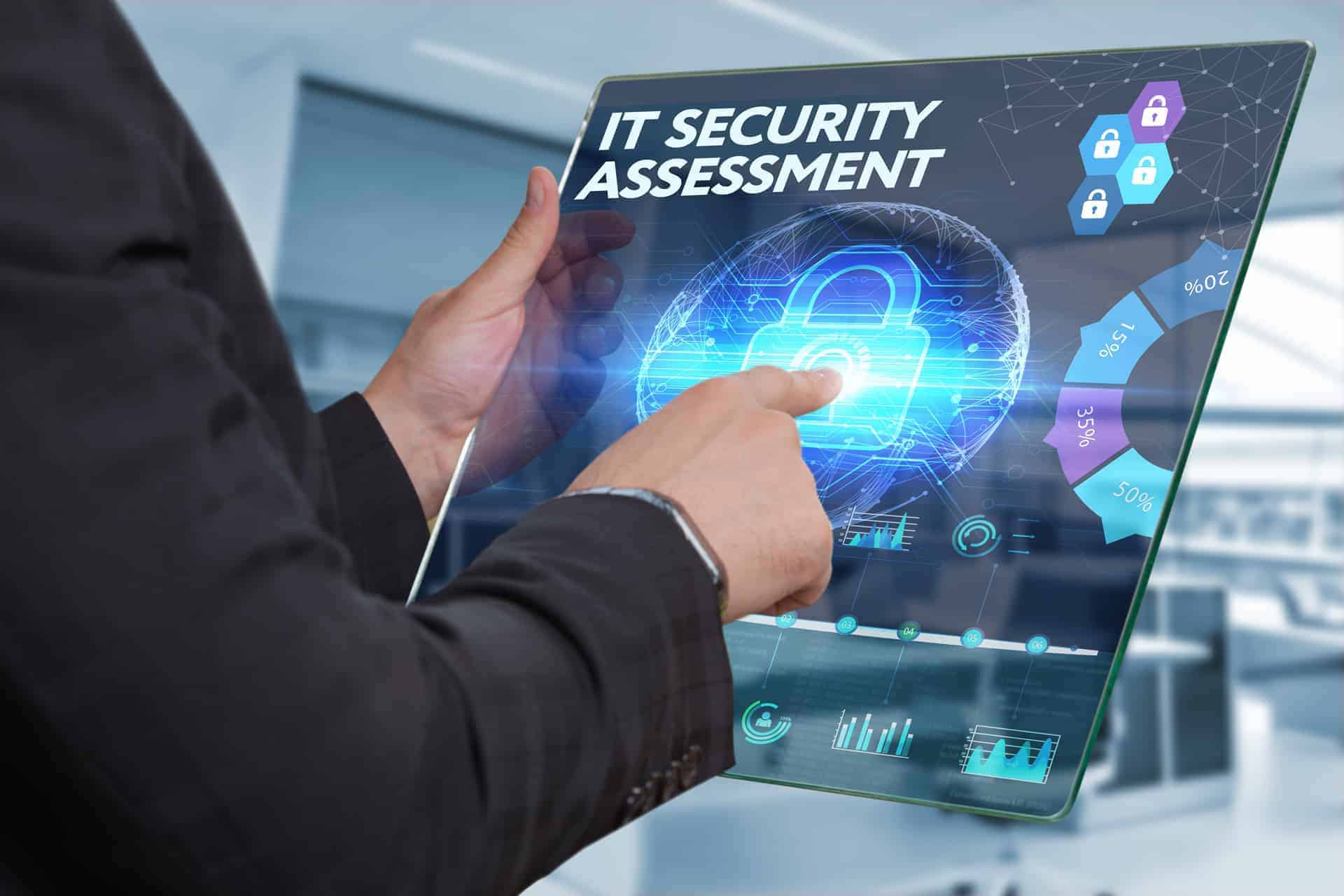SOC 1 compliance is a critical step for organizations that want to demonstrate their commitment to security and data protection. This blog post will serve as your ultimate guide to SOC 1 compliance. We’ll cover everything you need to know, from the basics of SOC 1, SOC 1 audit meaning to the steps involved in getting certified.
Key Takeaways
2. Preparation for a SOC 1 audit requires understanding the audit scope, developing a risk assessment, and documenting controls. Costs vary based on organization size, complexity, and audit scope.
3. Get SOC 1 compliant with the help of I.S. Partners leveraging our 25+ years of experience and thousands of successful SOC 1 audits.
What Is SOC 1 Compliance?
SOC 1 (System and Organization Controls 1) Compliance is an audit performed on service organizations to certify that they handle their customers’ financial information securely and effectively. It serves as evidence for customers, assurance providers, and regulators that an organization has adequate and functional controls related to financial reporting in place.
For instance, an eCommerce business that uses a cloud-based storage service to store transaction information would need to be SOC 1 compliant to reassure customers about the secure handling of their financial data. Although less applicable than the other SOC, SOC 1 compliance applies explicitly to service organizations that directly handle customers’ financial data.
SOC 1 compliance is based on the Service Organization Control (SOC) 1 report, an auditing standard developed by the American Institute of Certified Public Accountants (AICPA).
What Are the SOC 1 Requirements?
The AICPA’s SOC 1 framework outlines the requirements of SOC 1 in any organization. It demands that control objectives and controls be meticulously defined, well-designed, and operational over time. The AICPA framework also outlines the five major categories of objectives for internal control that a service organization must address:
- Control Environment: This requirement evaluates your organization’s overall control environment, which encompasses management’s commitment to control objectives and ethical values, as well as your philosophy and operating style.
- Risk Assessment: Your organization must identify and assess risks related to financial reporting. This involves considering both external and internal factors that might affect the integrity of financial data.
- Control Activities: As a service organization, you must establish and maintain specific control activities that address identified risks. These controls should help guarantee the accuracy and completeness of financial reporting.
- Information and Communication: This requirement involves the establishment of processes for the timely and effective communication of financial information both internally and externally. It covers how you capture, record, and report information.
- Monitoring Activities: Continuous monitoring and evaluation of control activities are essential. This includes ongoing assessment of control design and operating effectiveness.
SOC 1 compliance also demands that, as a business organization, you should have risk mitigation, change management, and incident response procedures in place.
These specific requirements for SOC 1 compliance vary based on the nature of the service provided and your organization’s unique circumstances.
What Are the Benefits of SOC 1?
Getting a SOC 1 for your service organization:
- Enhances the confidence of your customers that your systems are secure and have adequate controls in place to protect their data. With this knowledge, they trust you more with their data and financial information, hence improving your brand reputation and reducing customer churn.
- Opens up doors of opportunities for new business avenues. By achieving SOC 1 compliance, you demonstrate to potential customers that you meet their security and compliance requirements, making you a more attractive business partner.
- Gives you a competitive advantage over other businesses that are not SOC 1 compliant. When bidding on new contracts or RFPs, having a SOC report sets you apart from your competitors and makes you more likely to be awarded the business.
- Improves your operational efficiency and effectiveness. The process of preparing for a SOC 1 audit often leads to a review and enhancement of internal controls and operational procedures. This review process can cause the efficiency and effectiveness of your workers/teams to increase across the organization.
- Proves your dedication to data governance. SOC 1 compliance is a strong indication of your organization’s commitment to data governance, which is how you manage and protect your organization’s data assets. It includes developing and implementing policies and procedures to ensure your data is accurate, secure, and used responsibly.
Who Needs a SOC 1 Audit?
The purpose of a SOC 1 audit is to determine whether controls are effectively designed and operated to ensure the accuracy and security of financial information, especially as it relates to the services provided to clients. Service organizations that deal with or impact their clients’ financial reporting need a SOC 1 audit.
This can include organizations like payroll processors, who handle sensitive financial information for various businesses, or a loan servicing company responsible for the accurate calculation and recording of loan repayments.
Other organizations that need SOC 1 Audit include:
- Cloud computing providers
- Datacenter providers
- Software-as-a-service (SaaS) providers
- Business process outsourcing (BPO) providers
- Payment processors
- Accounting and tax preparation firms
- Financial institutions
- Healthcare organizations
- Insurance companies
- Government agencies
- Non-profit organizations
How Long Does a SOC 1 Audit Take to Complete?
The length of a SOC 1 audit depends on various factors, such as the organization’s size, the scope of the audit, and the controls in place. Typically, it can take anywhere between one to six months to complete. For a large financial institution with complex systems, the process may take longer than for a small payroll processing company, for instance.
Here is a typical timeline for a SOC 1 audit:
- Planning: 1-2 weeks
- Fieldwork: 2-4 weeks
- Reporting: 1-2 weeks
The planning phase involves the auditor meeting with you to understand your business timeline, systems, and processes. At the beginning, the auditor develops a readiness assessment and an audit plan that outlines the scope of the audit and the procedures that will be performed.
The fieldwork phase involves the auditor testing your organization’s controls to ensure they are effective. The auditor will also perform other procedures to gather evidence about your information security and compliance posture.
The reporting phase involves the auditor writing a SOC report that summarizes the audit’s findings and provides an opinion on the effectiveness of your organization’s controls.
There are two kinds of report types: SOC 1 report type 1 and SOC 1 report type 2.
- Type 1 reports on the effectiveness of your controls at a specific point in time.
- Type 2 reports on the effectiveness of your organization’s controls over a period, typically six months to one year.
This is just a typical timeline. The actual time it takes to complete a SOC 1 audit varies depending on the factors mentioned above.
Your service organization can help to reduce the amount of time it takes to complete a SOC 1 audit by being well-prepared. You prepare well by having all of the necessary documentation ready and making sure that staff are available to meet with the auditor.
How to Prepare for a SOC 1 Audit
SOC 1 preparation begins with understanding the audit scope and performing a comprehensive risk assessment.
1. Understand the SOC 1 audit process and what to expect: You can do this by reading the AICPA’s Service Organization Control (SOC) 1 SSAE 18 standard and by speaking with a qualified accountant or auditor.
2. Identify the scope of the audit: The scope of the audit will depend on your organization’s size and complexity, as well as the type of services you provide. You will need to work with your auditor to identify the specific systems and processes that will be included in the audit.
3. Document your internal controls: Your auditor must review your internal controls to assess their effectiveness. It is essential to have adequate documentation in place for all of your key controls. This documentation should include a description of the control, how it is implemented, and how it is tested.
4. Gather evidence of compliance: Besides reviewing your internal controls, your auditor will also need to gather evidence of compliance. This evidence may include test results, training records, and incident response plans.
5. Assign a team to support the audit process: It is crucial to assign a team to support the audit process. This team should be familiar with your systems and processes and should be able to provide the auditor with access to the necessary documentation.
6. Communicate with your auditor: Throughout the audit process, you must communicate with your auditor. Keep them informed of any changes to your systems or processes and be responsive to their requests.
Ensure that you:
- Start early. The earlier you start preparing for the audit, the smoother it will go.
- Stay organized. Have all of the necessary documentation ready and organized before the auditor arrives.
- Be cooperative. Be responsive to the auditor’s requests and provide them with the necessary information.
- Be realistic. Don’t expect the audit to be perfect. There may be some findings that require you to make changes to your systems or controls.
By following these steps, you can help to ensure that your SOC 1 audit is a success and is done perfectly
How Much Does a SOC 1 Audit Cost?
SOC 1 audit costs vary based on factors like the size and complexity of the organization, the audit scope, and the auditor’s experience. Costs could range from a few thousand dollars for a small organization with simple systems to tens of thousands for larger, more complex organizations. Most SOC 1 audits cost between $23,000 and $44,000.
Here are some factors that can affect the cost of your SOC 1 audit:
- Size and complexity of your organization: Larger and more complex organizations will typically have higher audit costs.
- Scope of the audit: A Type 1 audit is less expensive than a Type 2 audit.
- Experience of the auditor: More experienced auditors may charge higher fees.
- Location: Auditors in major metropolitan areas may charge higher fees than auditors in rural areas.
In addition to the audit fee, there may also be other costs associated with SOC 1 compliance, such as preparing for the audit and implementing any necessary changes to internal controls.
How to Achieve SOC 1 Compliance with I.S. Partners
I.S. Partners offers expert guidance and services to help organizations navigate SOC 1 compliance. From the assessment of existing controls to the design of solutions for identified gaps, I.S. Partners supports organizations throughout the process. We provide a comprehensive assessment of your internal controls and advice on needed remediation strategies, ensuring your organization meets the SOC 1 requirements. Read more about our SOC 1 services here.
FAQs About SOC 1 Compliance
SOC 1 Glossary
SOC 1 Type 1 Audit: A SOC 1 Type 1 audit is a point-in-time assessment of a service organization’s internal controls over financial reporting (ICFR). It provides a snapshot of the organization’s controls at a specific time.
SOC 1 Type 2 Audit: A SOC 1 Type 2 audit is a more in-depth assessment of a service organization’s ICFR over a period of time, typically six months. It assures that the organization’s controls are operating effectively over time.
SOC 1®, SOC 2® and SOC 3® are registered trademarks of the AICPA (American Institute of Certified Public Accountants). The AICPA® Trust Services Criteria for Security, Availability, Processing Integrity, Confidentiality, and Privacy is copyrighted by the Association of International Certified Professional Accountants. All rights reserved.




